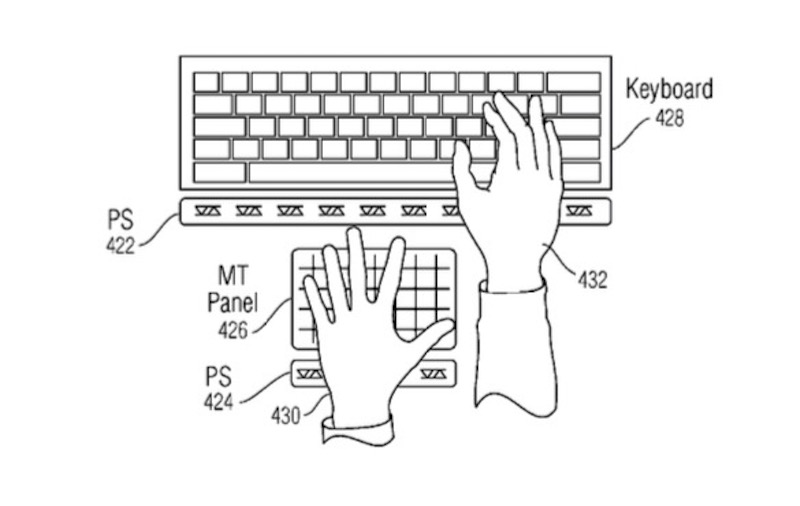New Patent Suggests Upcoming iPhones Could Feature a Futuristic ‘Hover Sensing’ Display

Toggle Dark Mode
In a move that builds upon the company’s widespread success with the iPhone 6s’ 3D Touch technology, Apple was awarded a patent on Tuesday for what it’s touting to be a “non-contact, hover gesture display featuring inline proximity sensors.”
The U.S. Patent and Trademark Office granted the patent to Apple, according to the filing for U.S. Patent No. 9,250,734. The patent in question, ”Proximity and multi-touch sensor detection and demodulation,” details methods by which photodiodes — or other proximity sensing hardware — work hand-in-hand with traditional multitouch displays to widen the scope of user interaction beyond the screen.

In a certain way, the invention is much akin to the company’s 3D Touch feature, aside from the fact that the display measures input in the opposite direction along the z-axis — (as you move away from an iPhone’s screen.)
Although a considerable amount of research has been done to investigate the concept of non-contact user interfaces as primary input methods, most commercialized applications to date have focused on that interaction utilizing long-range implementations of cameras or specialized optic systems. The perfect example of this would be Microsoft’s Kinect motion sensor for Xbox 360, which was developed in conjunction with the Israeli firm, PrimeSense, before they were acquired by Apple in 2013.
Apple proposes, in its patent filing, a far more intimate solution, optimized for use within the company’s iPhone, MacBook and other portable devices. As is the case with current iOS devices, the invention boasts a capacitive sensing element spanning the breadth of the LCD display, and featuring multiple other types of proximity sensors. The “hybrid solution” that Apple speaks of in its patent filing, provides a much more thorough experience of touch input by bringing hover gesture detection to the table.
From a Scientific standpoint, the filing suggests that infrared LEDs and photodiodes are used, (much in the same way that infrared proximity modules currently used in the iPhone function for head detection.) In other words, multiple sensor types, installed on a per-pixel basis, allow for the system to detect a finger, palm or other object hovering just above the display surface. The photodiodes would also be connected to the same analog channels as nearby physical touch sensors, which would ultimately save both space and power.

In practice, users could “push” virtual buttons, trigger functions without touching a display, toggle power to certain hardware components, and more — all just by being within relative proximity of the display. Apple would also be able to do away with the IR proximity sensor currently located next to an iPhone’s ear speaker, because multiple photodiodes would be present within the screen to carry the torch.
 In the patent, Apple outlines a number of alternative embodiments of the system — including proximity sensor alignment, ideal components to utilize, as well as a few sample GUI responses. One such embodiment, for instance, tells us of a theoretical MacBook implementation in which hover-sensing displays augment the user experiences of typing and using the trackpad.
In the patent, Apple outlines a number of alternative embodiments of the system — including proximity sensor alignment, ideal components to utilize, as well as a few sample GUI responses. One such embodiment, for instance, tells us of a theoretical MacBook implementation in which hover-sensing displays augment the user experiences of typing and using the trackpad.
Unfortunately, as intuitive as that concept may seem, this type of technology isn’t likely to make its way into a commercialized product anytime soon. Apple is still hard at work, looking for unique 3D Touch integrations to employ within its first-party apps; while the majority of third-party app developers have yet to take advantage of the pressure-sensing, 3D Touch feature of the iPhone 6s. Introducing yet another input method, so soon, would more than likely just confuse customers at the end of the day.
Originally filed in March, 2015, Apple’s pressure-sensing display patent credits Steven P. Hotelling and Christoph H. Krah as its inventors.
Learn More: New Patent Suggests High-Definition Speakers Featured on Future iPhones
[The information provided in this article has NOT been confirmed by Apple and may be speculation. Provided details may not be factual. Take all rumors, tech or otherwise, with a grain of salt.]






